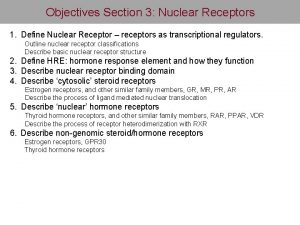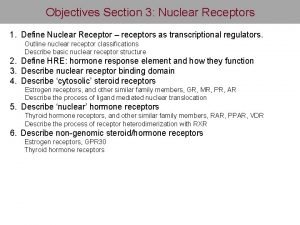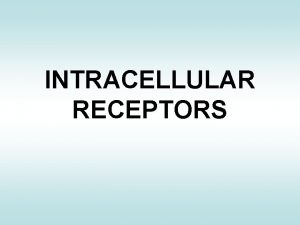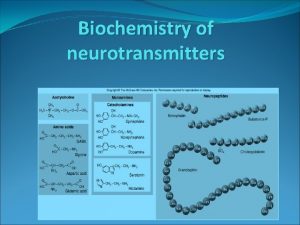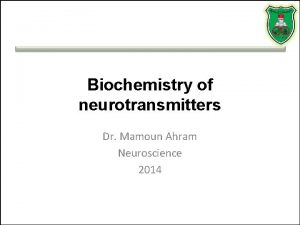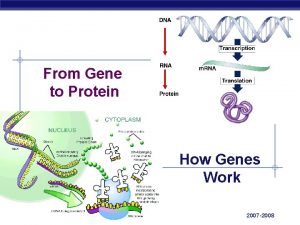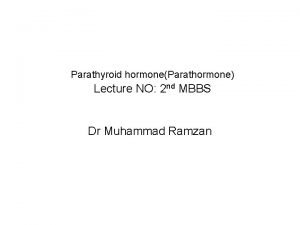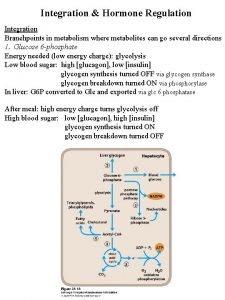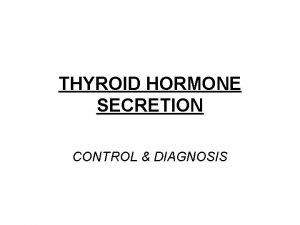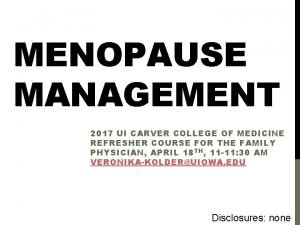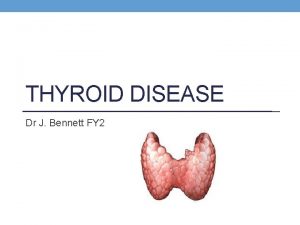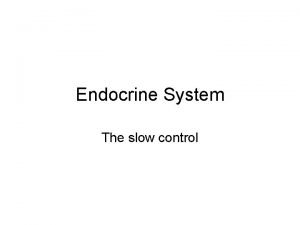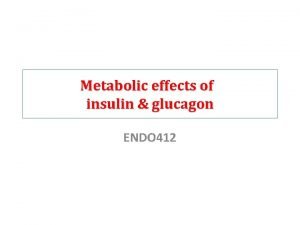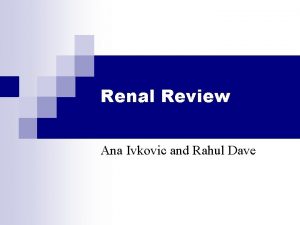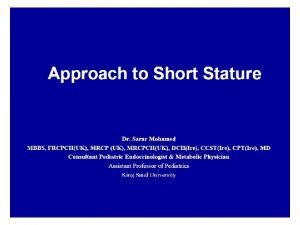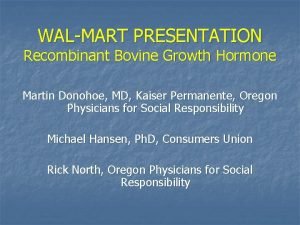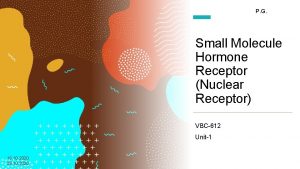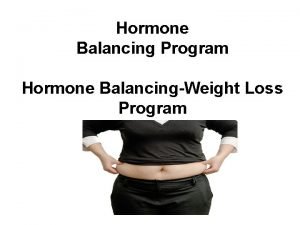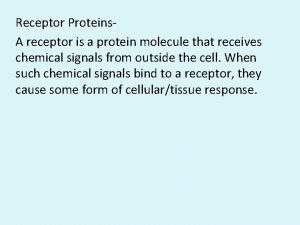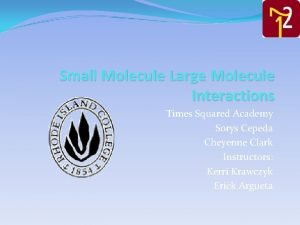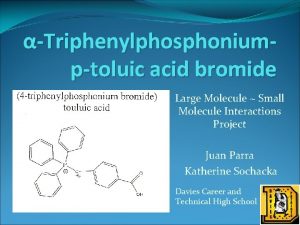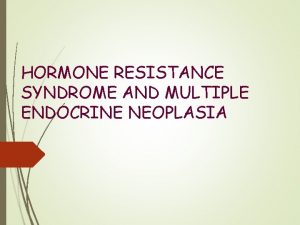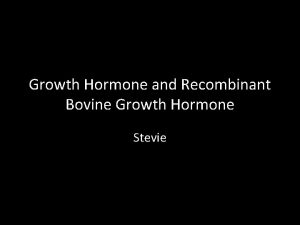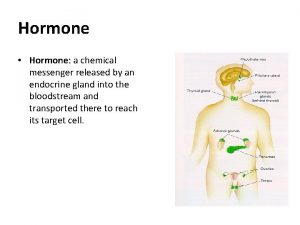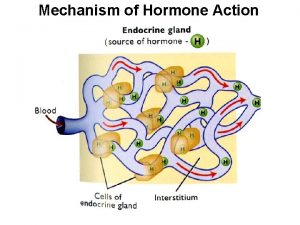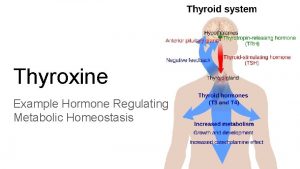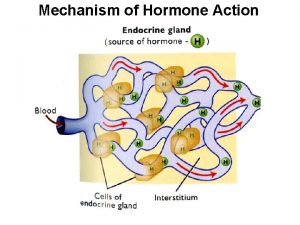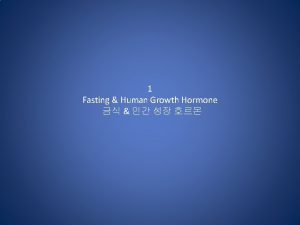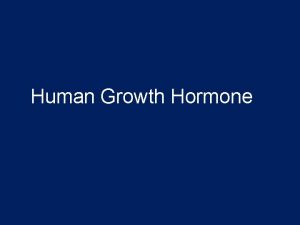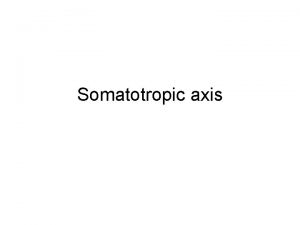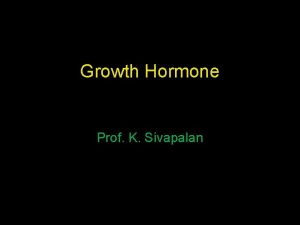P G Small Molecule Hormone Receptor Nuclear Receptor



















- Slides: 19

P. G. Small Molecule Hormone Receptor (Nuclear Receptor) VBC-612 Unit-1 16. 10. 2020 28. 10. 2020

Nuclear receptors are intracellular proteins expressed in the nucleus of a cell that have a binding site for a particular steroid molecule Nuclear receptors are a family of ligand-regulated transcription factors that are activated by steroid hormones, such as estrogen and progesterone, and various other lipid-soluble signals, including retinoic acid, and thyroid hormone. Nuclear receptors (NRs) are proteins that share considerable amino acid sequence similarity in two highly conserved domains DNA binding (DBD) and the ligand binding domains (LBD) Freedman, Cell 97 (1999)

Nuclear Receptors

Hormone Receptor. DNA Interaction Porter et al. (2019) DOI: 10. 3390/cancers 11121852

Basic components related to nuclear receptor Zinc fingers have one or more zinc atoms gripped by a combination of four amino acids, either cysteine or histidine. a protein can grab a zinc ion and fold tightly around it. a short chain of 20 -30 amino acids is enough to create a solid, stable structure. Many zinc fingers play essential roles in DNA recognition and essential role in the development of blood cells. Nolte (1998), PNAS 95

Heat shock proteins (HSP) • Are a family of proteins that are produced by cells in response to exposure to stressful conditions such as infection, inflammation, exercise, exposure of the cell to toxins ( ethanol arsenic, trace metals and ultraviolet light), starvation, hypoxia. • Heat-shock proteins are named according to their molecular weight. For example, Hsp 60, Hsp 70 and Hsp 90 (Chaperones). • Heat Shock Proteins bind to denatured proteins to prevent aggregation

Coactivator and Corepressor • Transcription coregulators that activate gene transcription are referred to as coactivators while those that repress are known as corepressors. The mechanism of action of transcription coregulators is to modify chromatin structure and thereby make the associated DNA more or less accessible to transcription Petkovic et al (1987). Nature 330

Hormone response element (HRE) • A short sequence of DNA within the promoter of a gene that binds to a Specific hormone receptor complex and therefore regulate transcription. • HRE responds to steroid hormones, as the activated steroid receptor is the transcription factor binding HRE Umesono et al (1991). Cell 65

Structure of Nuclear Receptor Five distinct regions : • Two end terminals – N terminal & C terminal. • A hinge region N- terminal C- terminal • Two domains – DNA binding domain & Ligand binding domain Puzianowska-Kuznicka et al (2013). DOI: 10. 1155/2013/601246

Structure of Nuclear Receptor N TERMINAL (A/B Region) • It is also called as VARIABLE terminal as the length of this terminal is variable for every hormone. • Its length ranges between 100 to 500 amino acids. • It contains several autonomous transactivation domain. DNA BINDING DOMAIN (C Region) • Highly conserved domain • It consists of two zinc fingers and forms a highly conserved residue core. • Usually present in the centre of receptor molecule. • binds to specific sequences of DNA called hormone response elements (HRE) HINGE REGION (D Region) • It is a poorly conserved region, serves as a connection between the DBD and LBD. • It allows the DBD and LBD to adopt different conformations without creating a steric hindrance. • Domain also harbors a nuclear localization signal

• LIGAND BINDING DOMAIN (E Region) • Largest domain and forms 30�% of the receptor • Referred to as an alpha helical sandwich fold in which three anti parallel alpha helices are flanked by two alpha helices on one side and three on the other • It is moderately conserved • Ligand binding cavity is within the interior of the LBD and just below three anti parallel alpha helical sandwich "filling • This domain with the heat shock proteins (chaperone proteins) in cytoplasm. • • C Terminal (F Region) the C-terminal is present at the end of LBD. It is a highly variable terminal with amino acids ranging from 530 to 984. The terminal connects the molecule to its pair in the homodimer or heterodimer. It may affect the magnitude of the response.

INTERACTION WITH DNA There two models about how the hormone interacts with the DNA Ist Model • The DNA is wrapped tightly in nucleosome which is composed of histone fold domains. • The nucleosome also consists an amino terminal tail rich in lysine. • Acetylation of tail lysines reduces the affinity of histone to DNA, thus making it accessible to transcription factors. • The architecture of the nucleosome is also maintained. IInd Model • According to the 2 nd model NURF induces an ATP dependent remodeling of chromatin resulting in an unstable or transient opening of promoter nucleosome. • In this case, NF 1 acts as a wedge to stabilize the open conformation of chromatin

Transcription regulation by small-molecule hormones Puzianowska-Kuznicka et al (2013). DOI: 10. 1155/2013/601246

Regulation • The action of small molecule hormone ligand is regulated by the presence of two components- Coactivators and Corepressors. • The activation or inhibition of transcription of genes by ligand depend on the presence of these components. • They are a class of protein whose mechanism & function is synonymous to that of coenzymes & inhibitors in case of enzyme action. Corepressors • Not much known about them. • Antagonizes the effect of hormone to stimulate transcription from reporter genes

COACTIVATORS Made up of amino acid motif. It is distinguished into two classes 1. Interacts with sequence specific transcription factors. 2. Interacts with general machinery on core promoter elements. Eg. TATA box binding protein https: //www. open. edu/openlearn/science-maths-technology/cellsignalling/content-section-2. 5

Type I receptor genomic mode of action • The hormone enters the cell by diffusion • hormone-free receptors form an inactive complex with heat shock chaperone • Upon hormone binding, translocates into the nucleus • Recruitment of a coactivator complex possessing a histone acetyltransferase activity results in local chromatin decondensation Puzianowska-Kuznicka et al (2013). DOI: 10. 1155/2013/601246

Type II receptor genomic mode of action • In the absence of the hormone, the receptor binds to HRE as heterodimer with 9 -cis-retinoic acid receptor • a corepressor complex possessing a histone deacetylase activity • Upon hormone binding, the receptor changes its conformation, which results in the dissociation of the corepressor complex and in the binding of the coactivator complex • Histone acetylation results in chromatin decondensation Puzianowska-Kuznicka et al (2013). DOI: 10. 1155/2013/601246

Nongenomic mechanisms of action of smallmolecule hormones (A) Interaction of the hormone with cell membrane receptor- modifies the function of ion channels (B) Activation of phospholipase (C) Activation of c-SRC by the hormone-activated nuclear receptor (D) The binding of the hormone-activated nuclear receptor to the phosphatidylinositol 3 kinase p 85�� subunit results in an increased synthes inositol triphosphate (E) In mitochondria, acting via their shorter (mitochondrial) isoforms of HR regulate transcription of mitochondrial DNA (F) The binding of the hormone activates protein kinase (C) Puzianowska-Kuznicka et al (2013). DOI: 10. 1155/2013/601246

Tissue-specific nuclear receptor signaling Cold Spring Harb Perspect Biol 2013; 5: a 016709
 Thyroid hormone receptor
Thyroid hormone receptor T3 receptor
T3 receptor Intracellular receptors
Intracellular receptors Fisión nuclear vs fision nuclear
Fisión nuclear vs fision nuclear Lesson 15 nuclear quest nuclear reactions
Lesson 15 nuclear quest nuclear reactions Small molecule neurotransmitters
Small molecule neurotransmitters Small-molecule neurotransmitters
Small-molecule neurotransmitters Small nuclear rna
Small nuclear rna Parathyroid hormone definition
Parathyroid hormone definition Integration metabolism
Integration metabolism Erythropin
Erythropin Hormone therapy
Hormone therapy Horm res paediatr
Horm res paediatr What does a thyroid do
What does a thyroid do Nontropic hormones
Nontropic hormones Effect of insulin on carbohydrate metabolism
Effect of insulin on carbohydrate metabolism Phosphate trashing hormone
Phosphate trashing hormone Hormone responsible for growth
Hormone responsible for growth Where to boy human growth hormone walmart
Where to boy human growth hormone walmart Hormone introduction
Hormone introduction
